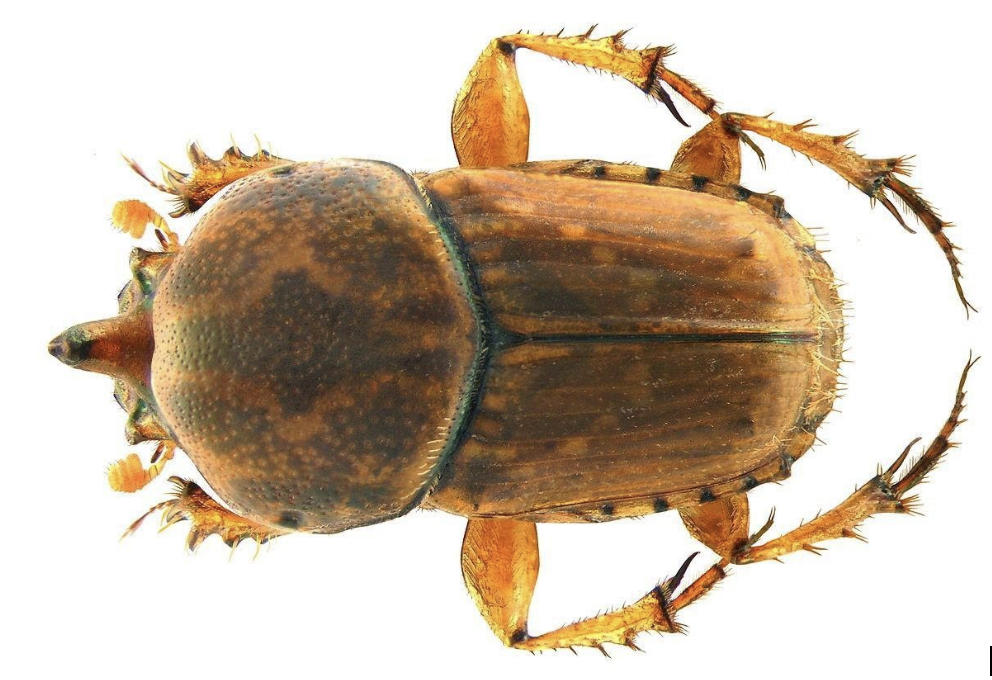What these little golden dung beetles lack in size, they make up for in numbers. These tiny tunnellers call cattle dung home from late winter, peak in summer and continue their activity well into autumn – making them a valuable complement to other dung beetle fauna in Australia.
Among the smallest of the imported dung beetles that have established in Australia are members of the genus Euoniticellus. These little tunnellers are found in cattle and other dung in all but the coldest months of the year. What they lack in size they make up for in numbers; hundreds can be found in a single dung pad.

There are four members of the genus in Australia: E. africanus, E. fulvus, E. intermedius and E. pallipes. The smallest is E. intermedius, ranging in size from 7 to 9 mm, and E. africanus the largest, ranging from 8 to 13 mm, although the other two species are not much smaller than E. africanus. All members of the genus are golden brown in colour with mottled elytra (wing covers), but several characteristics help differentiate the species.
Males of E. intermedius have a small horn at the front of their head, unlike any of the other Euoniticellus species. If the pronotum is uniformly golden brown in colour, the species is most likely E. fulvus. Euoniticellus africanus and E. pallipes both have small, dark triangular patches on the pronotum (the dorsal surface between the head and elytra), but E. africanus has one pair of such patches whereas E. pallipes has two pairs. These patches on living specimens are sometimes not as distinct as studio photos would indicate, so looking at the ridges on the head of specimens under suitable magnification may be a more reliable character for species identification. Female E. pallipes have a small ridge between the eyes, which is missing in E. aftricanus. In addition, male E. pallipes have a slightly arched ridge between the eyes, which is parabola-shaped in E. africanus. Fact sheets with detailed information (and photos) to assist with dung beetle identification are under development and will be available via the DBEE website and FaceBook page in the near future.
All of the Euoniticellus species are active during the day and begin their seasonal activity in late winter. Their peak abundance is in the middle of summer, but the timing of peak activity varies from place to place. Euoniticellus spp. continue their activity well into autumn, which means they perform their useful activities for a large percentage of the year. Even better, all of these species complete at least two generations per year, and up to six in the case of E. intermedius. This means that their numbers can increase rapidly, facilitating their rate of establishment and spread.
Although their small size makes them easy to overlook, the little golden dung beetles in the genus Euoniticellus are valuable members of the dung beetle fauna in Australia and are worth their weight in gold.